On Friday, we published an article regarding all Type 45 Destroyers being in Portsmouth at the same time, the Ministry of Defence have responded.
The story was then picked up by Sky News and many other national news sources after them. The issue became one that was covered nationally, however, many decided to put an incredibly negative spin on the news.
An MOD spokesperson said:
“This week the Royal Navy had over 8,500 personnel deployed on operations around the world and 34 ships at sea.
All Type 45 destroyers are currently in port as they have either just returned from operations, or are about to be deployed, are conducting training or carrying out maintenance or are home for crew to take summer leave.”
Despite all Type 45 Destroyers being in Portsmouth, apart from HMS Dauntless, all the of the vessels are in their normal operating cycle.
While a full remedy for their well known mechanical issues is being worked on and the vessel will eventually return to operations, currently a partial fix for the propulsion system has been put in place on most vessels.
The information comes from @NavyLookout on twitter, more can be found at savetheroyalnavy.org
Apart from HMS Dauntless, all the Type 45s are in normal operating cycle @AliBunkallSKY @UKDefJournal pic.twitter.com/519mvMBFS5
— NavyLookout (@NavyLookout) July 29, 2016
The Type 45 destroyers are primarily designed for anti-air warfare with the capability to defend against sophisticated targets such as fighter aircraft, drones as well as highly manoeuvrable sea skimming anti-ship missiles travelling at supersonic speeds.
The Royal Navy describes the destroyers’ mission as being “to shield the Fleet from air attack”.
The engineering problems with the Type 45’s has been no secret, it was even addressed in the November 2015 Strategic Defence and Security Review, which stated funding is to be made available for:
“A Type 45 machinery improvement package to deliver the most modern AAW and BMD platform in the world more reliably”.
It is understood that the ships will have to be refitted at a cost of tens of millions of pounds.
The Type 45s were the first complex warships to employ an integrated full electric propulsion, which uses gas turbines and diesel generators to power electric motors, which turn the propellers.
Problems with the system emerged during shore testing in 2005 and have been denting reliability of the destroyers ever since, with many having to cancel port visits, deployments and even come home early.
The Ministry of Defence had this to say:
“The Type 45 destroyers are hugely capable ships and have consistently made a difference to our safety and security, including HMS Defender’s support to US carrier operations against Daesh in the Gulf.
In our defence review last year we committed to improving the Type 45’s power and propulsion system through a series of machinery upgrades during planned maintenance, which will ensure increased availability and resilience over the life of the ships.”

It’s no secret that Type 45 Destroyer HMS Dauntless has endured the most issues relating to the widely reported propulsion issues currently found in the Type 45 Destroyers.
A parliamentary written question has confirmed what many have feared, that the vessel will not be leaving Portsmouth for some time.
Asked by Douglas Chapman (MP for Dunfermline and West Fife)
“To ask the Secretary of State for Defence, whether HMS Dauntless is being used as a harbour training and accommodation ship.”
Answered by Philip Dunne (then Minister of State for Defence Procurement)
“The introduction of Engineering Training Ships is an important component of the Royal Navy’s comprehensive programme to improve training and career development opportunities by increasing training capacity.
Ships in the operating cycle immediately ahead of refit will be used to deliver training alongside home Bases and Ports. HMS DAUNTLESS entered this profile in February this year.”
A reduced Ship’s Company reside on board as normal, augmented by trainees who use the opportunity to gain experience through development activities in a realistic environment.”
HMS Dauntless is the second ship of the Type 45 or Daring-class air-defence destroyers built for the Royal Navy.
One of the most controversial of her, until recently, frequent deploys was in January 2012, when it was announced that Dauntless would deploy to the South Atlantic to replace HMS Montrose which was stationed around the Falkland Islands. The deployment was condemned by the government of Argentina, which claimed that the UK was “militarising the South Atlantic”, despite the replacement representing only a modest increase in fighting capacity.
In 2015, Dauntless re-sailed for the Middle East after a short delay, with a plan to take part in the centenary of the Gallipoli Campaign. She conducted anti-piracy patrols, as well as escorting US Navy aircraft carrier USS Carl Vinson.
While a remedy is being worked on and the vessel will eventually return to operations, this will not be for a few years yet.



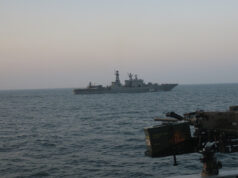
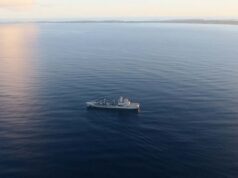
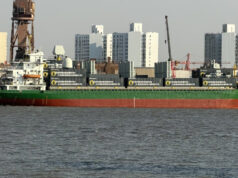
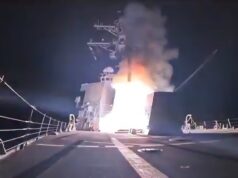
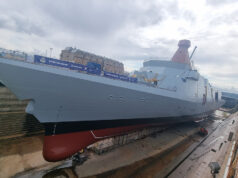


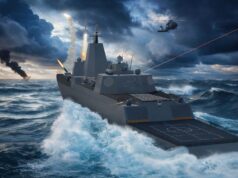
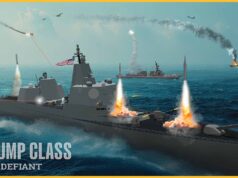

Good
The old saying ‘perception is truth’ comes into play here. Those in the know are in the minority and regardless of spin or facts the perception remains.
To stamp on these issues the MoD needs to get the issue sorted so the ships are back at sea. Even the ships crew have negative feedback on the technical issues.
Too much delay and too little action.
Too little budget 🙁
I said the power plant problem was why they are all in port on an earlier post of this. It is good that these excellent vessels will no longer have problems in warmer climates.
“While a full remedy for their well known mechanical issues is being worked on”
Not sure how you can describe the fitting of an extra generator, whilst the WR-21 GTs will still be prone to breakdown in warm waters, as a: “Full Remedy”?
Rolls Royce, in a bizarre statement said, they were not told the ships would be operating in warm climates.
What about my favourite HMS Daring D32. type 45 destroyer
Chaps aboard HMS Dragon hopefully had a good spot of shore time.
Just a suggestion, but maybe you could set up a FAQ about the WR-21 issues so that you don’t get the same questions and misconceived comments over and over.
A ship without a working power-train is useless!..Why has this happened and WHERE is the value-for-money for the tax-payer??? It’s totally outrageous!!
So basically 6 billion in the bin …by the time the ships are fully functioning they will be outdated … 1billion spent on a training ship is disgusting
No, that’s not accurate at all, the vessels will certainly not be outdated.
They can’t even defend themselves against another ship… so why are they out on payroll of their own ?
Can u justify why they can’t defend themselves against another ship ???
As u can read from many articles they are designed to protect themselves . The fleet and the country against any airborne attack and usually accompanied by frigates subs and carriers or lpd class vessels to protect said fleet so how do u justify saying they can’t defend themselves
OK they can defend but they can’t attack.. there are no anti-ship missiles
Most of the 6 have hypoon missiles and all have a main gun and helicopters with torpedos. They are cable of defending and fighting back. The the thing they are really missing is land attack missiles.
Stroppy
Most of them have/ are being fitted with Harpoon.
I think only four have utilising the launchers from the B3T22’s.
Isn’t harpoon outdated ?
In April 2015, Boeing unveiled a modified version of the RGM-84 it called the Harpoon Next Generation. It increases the ship-launched Harpoon missile’s range from the Block II’s 70 nmi (81 mi; 130 km) to 134 nmi (154 mi; 248 km), along with a new lighter 300 lb (140 kg) warhead and a more fuel-efficient engine with electronic fuel controls. Boeing is offering the missile as the U.S. Navy’s Littoral Combat Ship frigate upgrade over-the-horizon anti-ship missile as a cost-effective missile upgrade option; complete Next Gen Harpoons would cost approximately as much as a Block II at $1.2 million each, with upgrades for an existing missile costing half that. The Harpoon Next Generation will likely compete against the Kongsberg/Raytheon Naval Strike Missile and could be ready for service by 2017.The version is also called the Harpoon Block II + ER. Boeing claims the Block II+ ER is superior to the NSM through its improved turbojet giving it greater range and active radar-homing seeker for all-weather operation, as well as a lighter but “more lethal” warhead.
Max Baker Sea Skua on the helicopter as well as Harpoon. T45 is a specialist Air Defence ship. Others do the anti-ship role.
The Sea Skua is to be replaced with the Sea Venom very soon. Much like its predecessors, Sea Venom is designed to attack surface targets, such as fast in-shore attack craft (FIACS) ranging in size of between 50 and 500 tonnes, as well as larger surface targets of up to corvette size. With its 30 kg warhead, the missile is also capable of inflicting significant damage to larger vessels through precision aim point selection, and can also attack static land-based targets. Whilst its precise range is currently unknown, MBDA has stated that the missile has a “long” stand-off range enabling it to be launched from beyond the reach of most modern air defence systems.
Max Baker Harpoon is still in use by the US Navy, although I think there’s a new vertically launched missile in development for France and RN (Perseus)
So isn’t there a danger of the 45 being out on its own … having to rely on a slow helicopter and a outdated harpoon system just doesn’t seem safe enough
Explain to everyone why you think Harpoon is outdated?
It’s all doom and gloom with you Max isn’t it?
I’m just asking if they have the capability or not …
This link shows HMS Duncan with her Harpoon. https://www.flickr.com/photos/davidparody/16116297023
Whatever you say.
They are always protected by other ships that’s the whole point in a fleet . If it’s not our fleet it’s usually u.s fleet etc as you can see from latest fleet updates
They always seem to be on their own… unless they’re on operations with us fleet… I’m just saying this because when you see a t45 alongside a Russian destroyer escorting it across the channel … how would it in reality cope if the Russians decided to attack…yes not likely but I don’t understand why British ships are underpowered and under armed
Have u thought about the unseen fleet that may or may not be escorting them too ???
Plus as said before it has various defences as well as attack capabilities like harpoon and all else fails there’s a bloody big gun at the bow lol
So the type 22s protect our 45s with harpoon and soon to be perseus until the 26s are built and they will be built with perseus
And the 23s and astute and soon to be the carriers
Oh plus u still have bay class etc with their defences and helicopter groups along with hms ocean
It’s just sad that in a game of one on one the 45 would not do very well against anything else
Propulsion and manpower problems deary me.
Where’s the manpower for the carriers and supporting group coming from?
I’m baffled by years of cuts only to then recruit and witness the same cycle over the years.
Last years EU net contribution according to latest figures was £199M a week, now there’s no excuses.
“Last years EU net contribution according to latest figures was £199M a week, now there’s no excuses.”
I’m honestly not sure if you’re joking but, in case you’re not…
(a) we’re still in the EU and so continue to pay our contribution. The chances are that we will continue to do so until about 2 years after Article 50 is triggered, rumoured to be early next year, so we’ll probably stop paying EU contributions at about the end of 2018
(b) with a UK public revenue of about £13,115M a week last year (£682bn a year – http://www.ukpublicrevenue.co.uk/total_revenue_2016UKbn) it only takes a 1.5% under performance in the economy vs previous pre-Brexit predictions for that £199M a week saving on contributions to be eaten up by loss of planned tax revenues. Right now the predictions are for the downward revisions in growth, maybe even recession, is far more than 1.5% by the end of this term of parliament. Even worse, the start of the downturn and loss of expected tax revenue is likely to overlap (a) above so a double-whammy for a year or two.
Are they all in Portsmouth? I didn’t see them all Sunday when I was there.
They are indeed.
Good old Skua – 32 years young this year! What a glorious success story. But then, it was procured before SMART procurement became the watchword for useless kit.
So Pompey runs the strike fleet, while Devonport runs amphib, patrol and support?
Type 45s clearly are under-armed in terms of aggressive action against surface ships. No good saying it’s an air defence ship, so it doesn’t need anti-ship missiles. Best form of defence is attack and anyway, the RN is so small that it is quite possible, if not likely, that in the course of their lives Type 45s will be shoved out on their own in situations where there are no other assets to protect them or attack with them. The planners don’t seem to have expected the unexpected, in this sense. This is a fatal flaw, if you ask me.